A New Life on Pittwater
Anna Ingham aboard her 1952 Crayboat, OWEN JOHN
Occasionally, quite unexpectedly, we come across our heroes. And by heroes I don’t mean shiny bright versions holding trophies aloft or those splashed across front pages. No, rather I’m offering a more quiet version of greatness in the form of people whose values, mindset and actions not only align with our own but move us to be a greater version of ourselves. Anna Ingham, the current custodian of a 42ft, cray boat, the OWEN JOHN (OJ), is such a person.
This is the rare story of how a woman decided to buy a solid, bulldog of a boat.
Why rare you may ask. While, I was unable to locate an exact figure of female boat ownership, if my own club is anything to go by, only 1 in 100 boats is registered in the name of a woman. So, yes, rare is the word. For now, anyway. Personally, I don’t get it however, it’s still considered by many to be an oddity for women to personally own boats. Of course many of us own them in partnership, but what I’m talking about here is the choice of a woman to go out and buy herself a boat. I have theories, though for another time.
According to Anna he, for OJ is a he and not a she, was built in 1952, in Dover, Tasmania from Celery Top Pine and Tassie Bluegum and then later fitted out in Kettering. First up he was called GRACE and then later, SURPRISE until he happened to fall into the hands of two brothers, who much like their boat were clearly solid, literal and straightforward gents. They renamed him after themselves, the two brothers being Owen and John.
I first became aware of the OJ while anchored on Pittwater. There he sat, amongst the flash moorings of Palm Beach where the hold is good and shelter is great and a walk to the ocean beach for a pound in the a waves promises no better way to start a day.
Boats like OJ are divided roughly into thirds – living, fish well, engine – so at 42ft, he’s not large, nor beamy, but anyone with a hankering to kick back in a deck chair with mates on a summer’s eve, will understand. I’m pretty sure the first time I saw the Owen John there was bunting in his rigging, for that is the kind of ship he is in this modern age. Post being a working cray boat, the OJ is today a base for good times.
Recently I asked Annie if she’d be available for an interview aboard, I’d row over with a bottle of bubbles and so as the sun began to dip around 6pm, I tethered my dingy to OJ’s topsides, I left at 9.
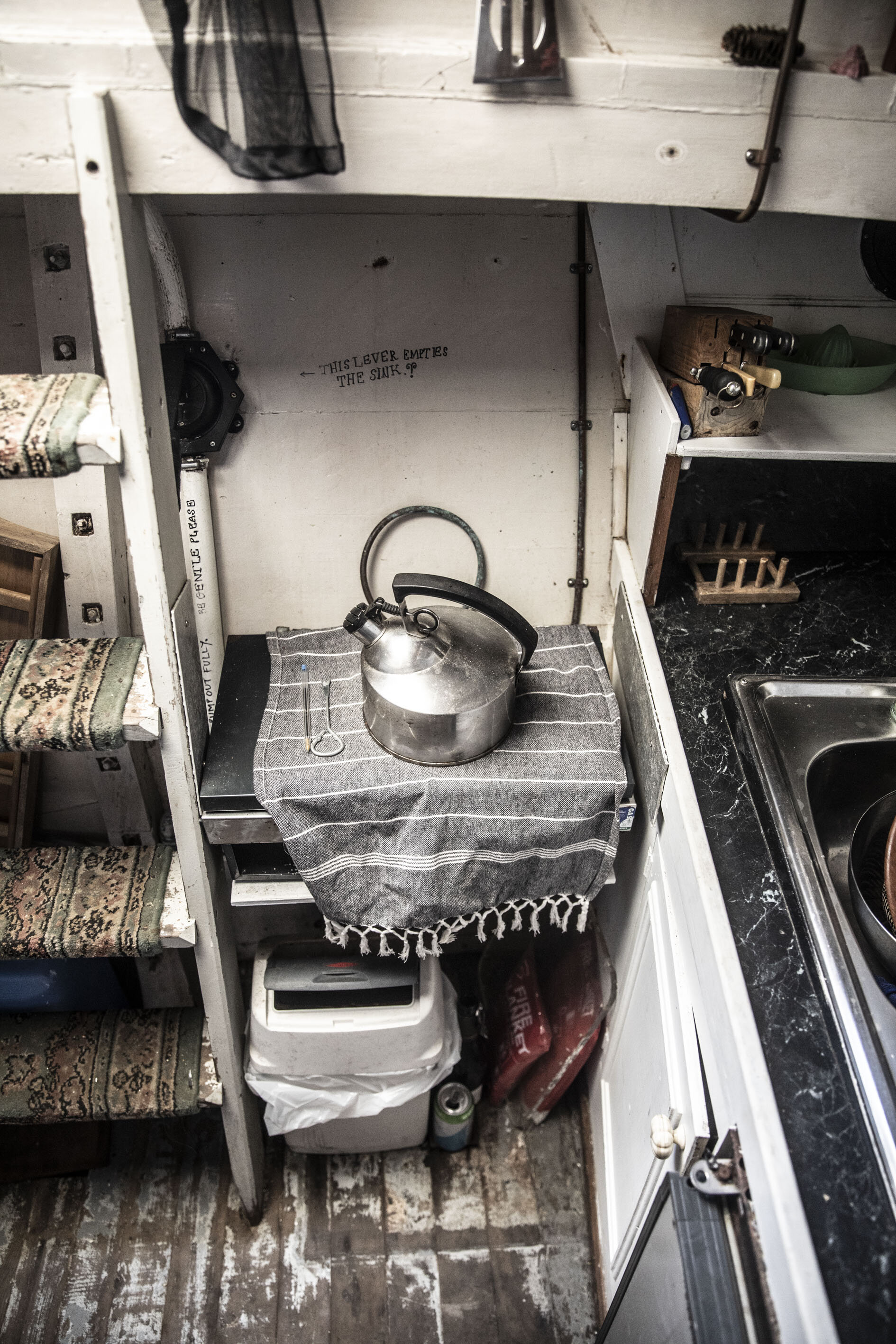
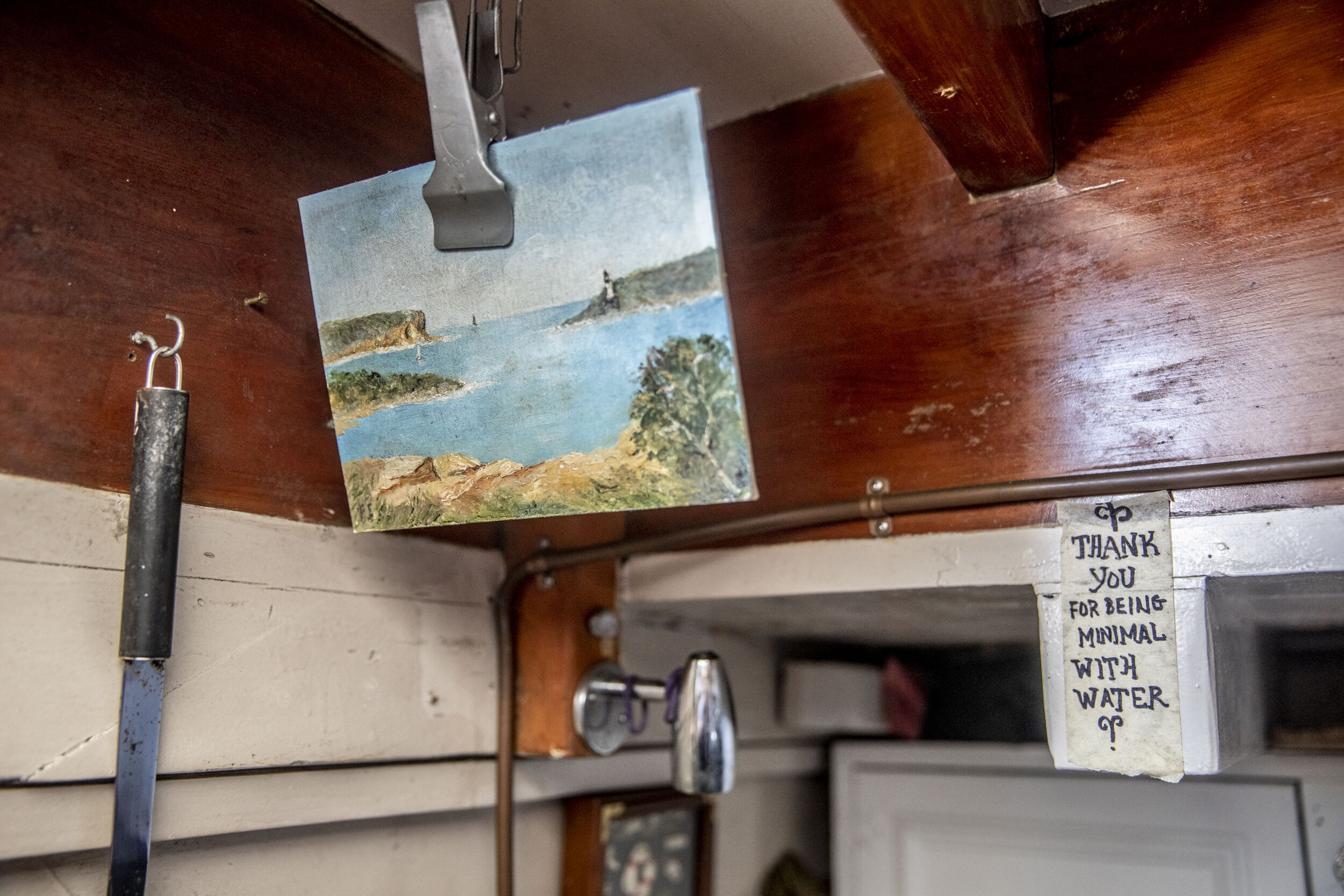
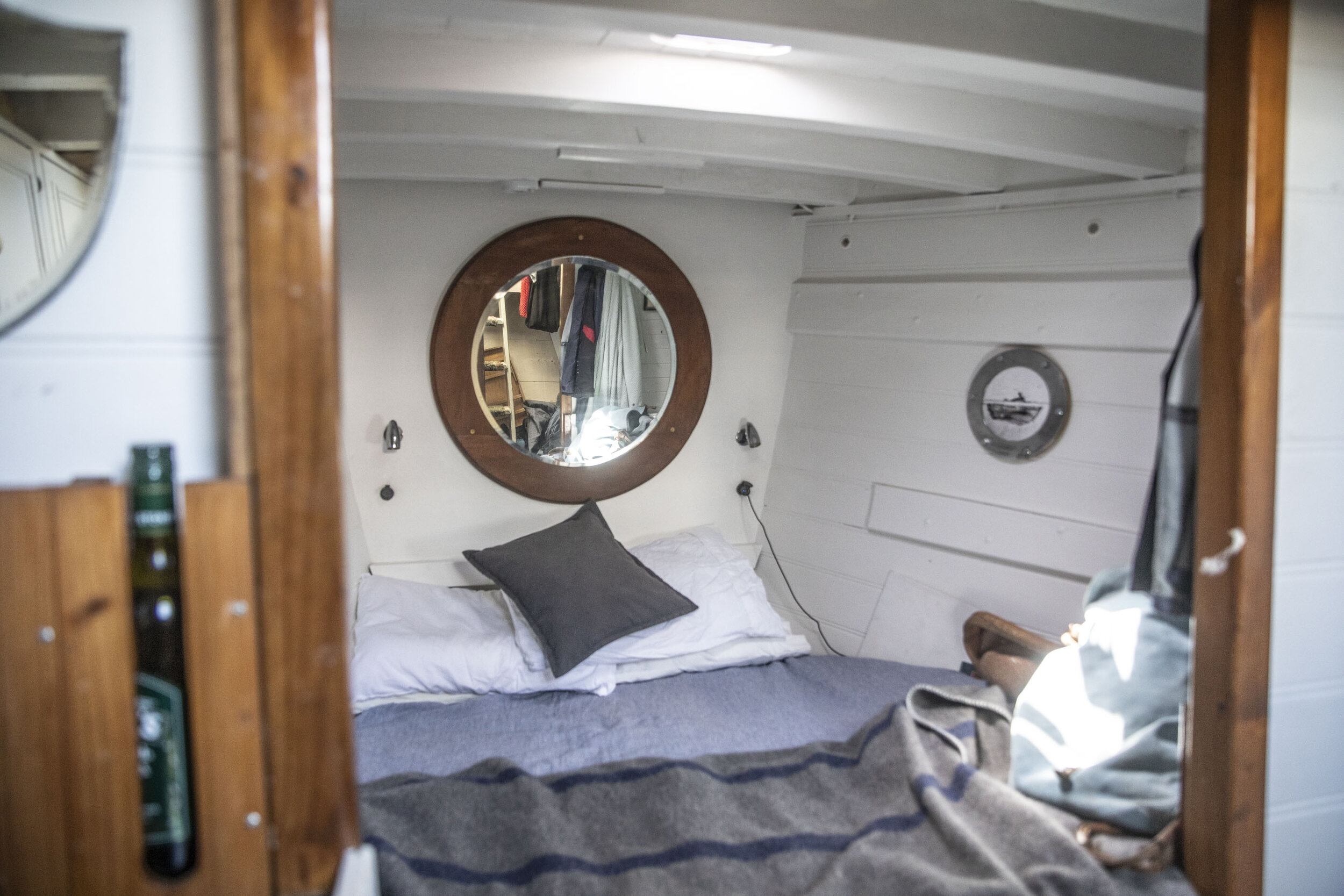

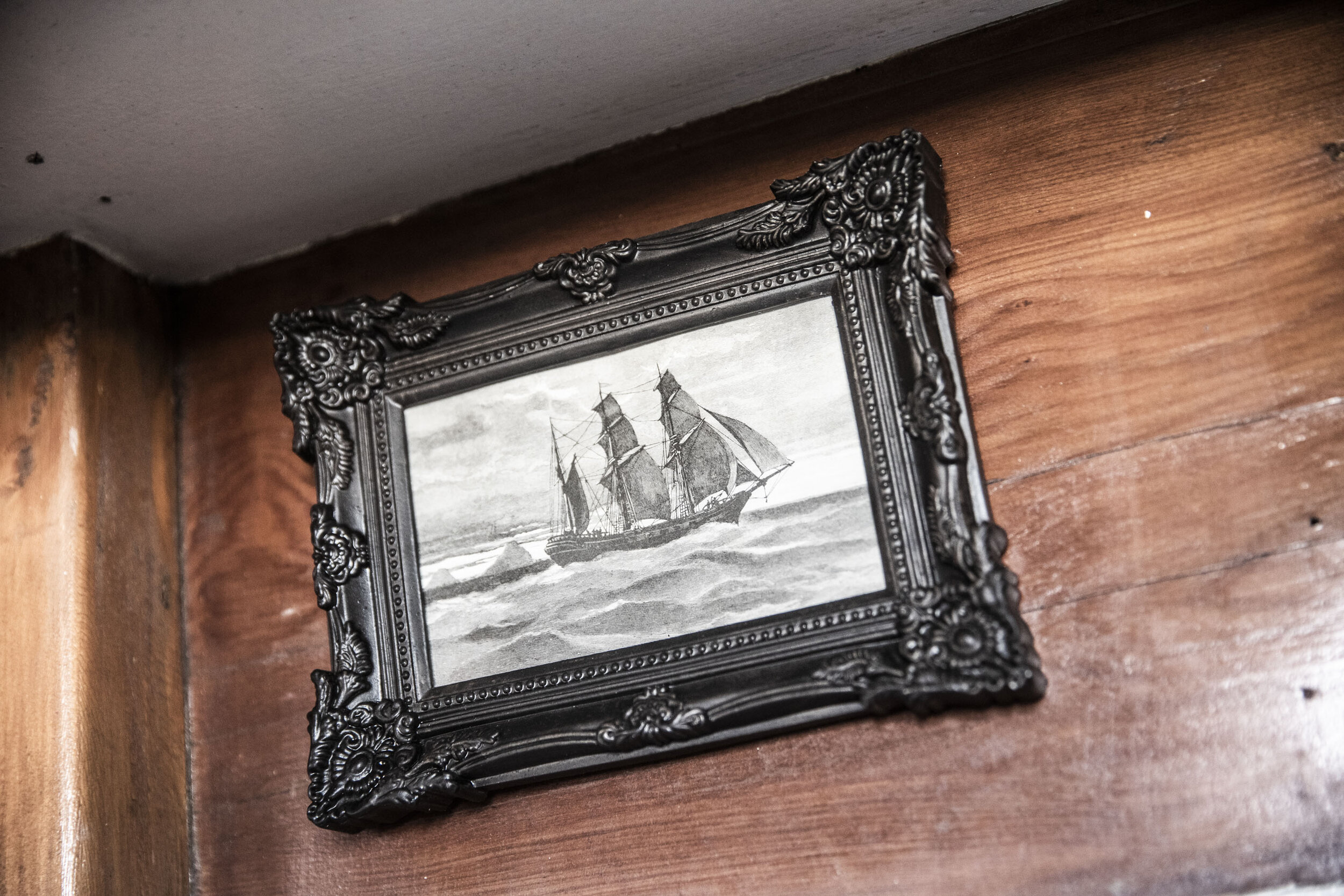
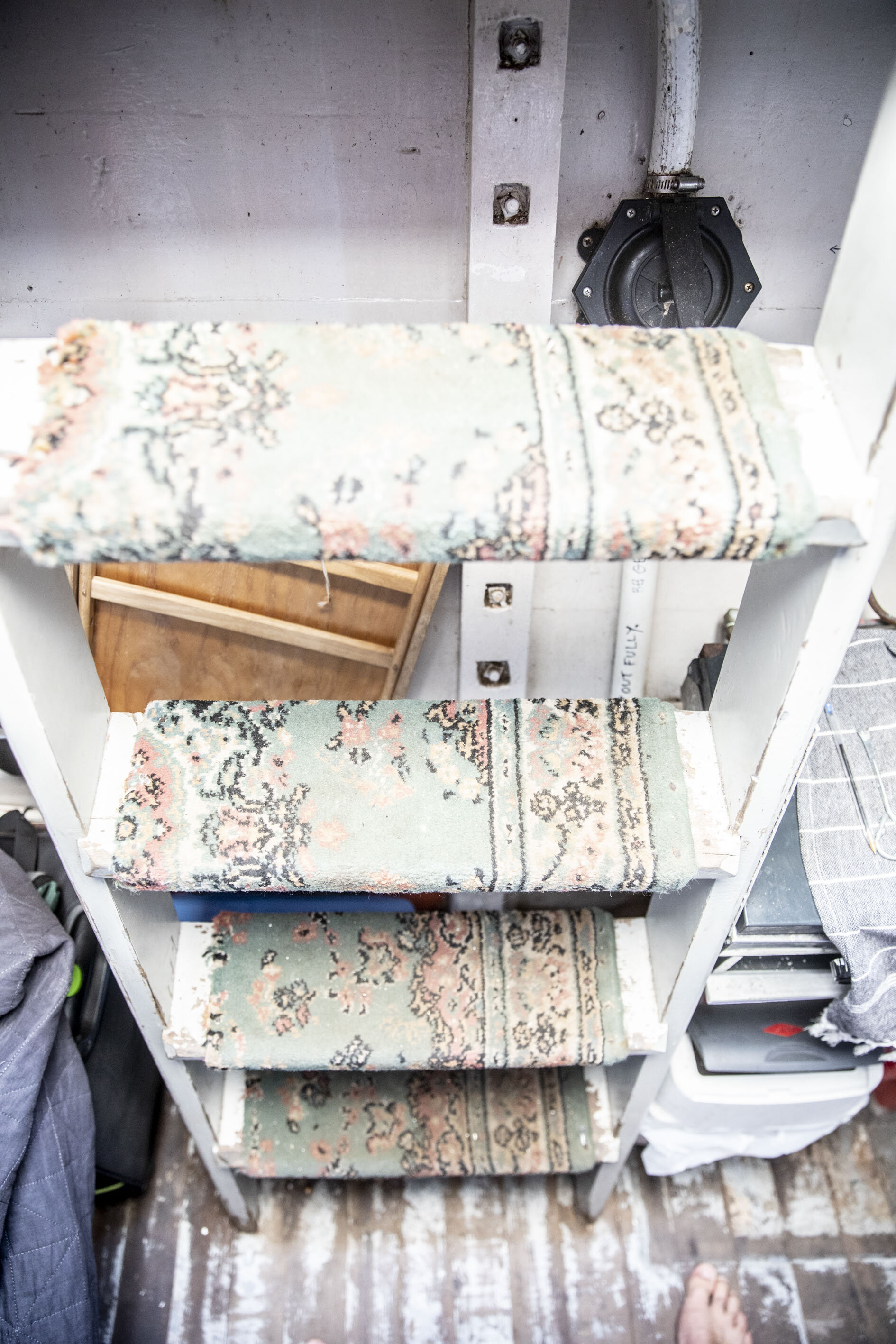
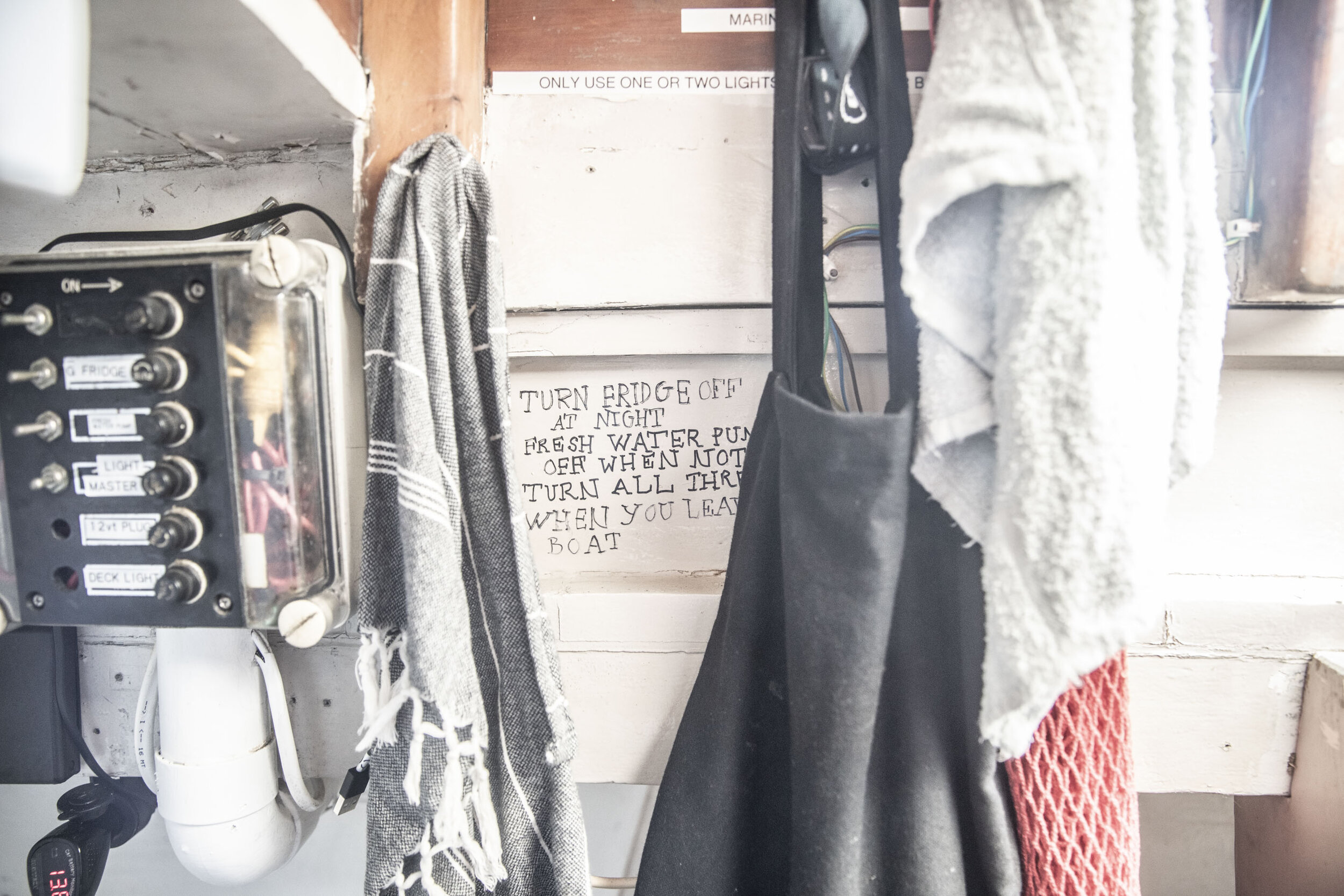
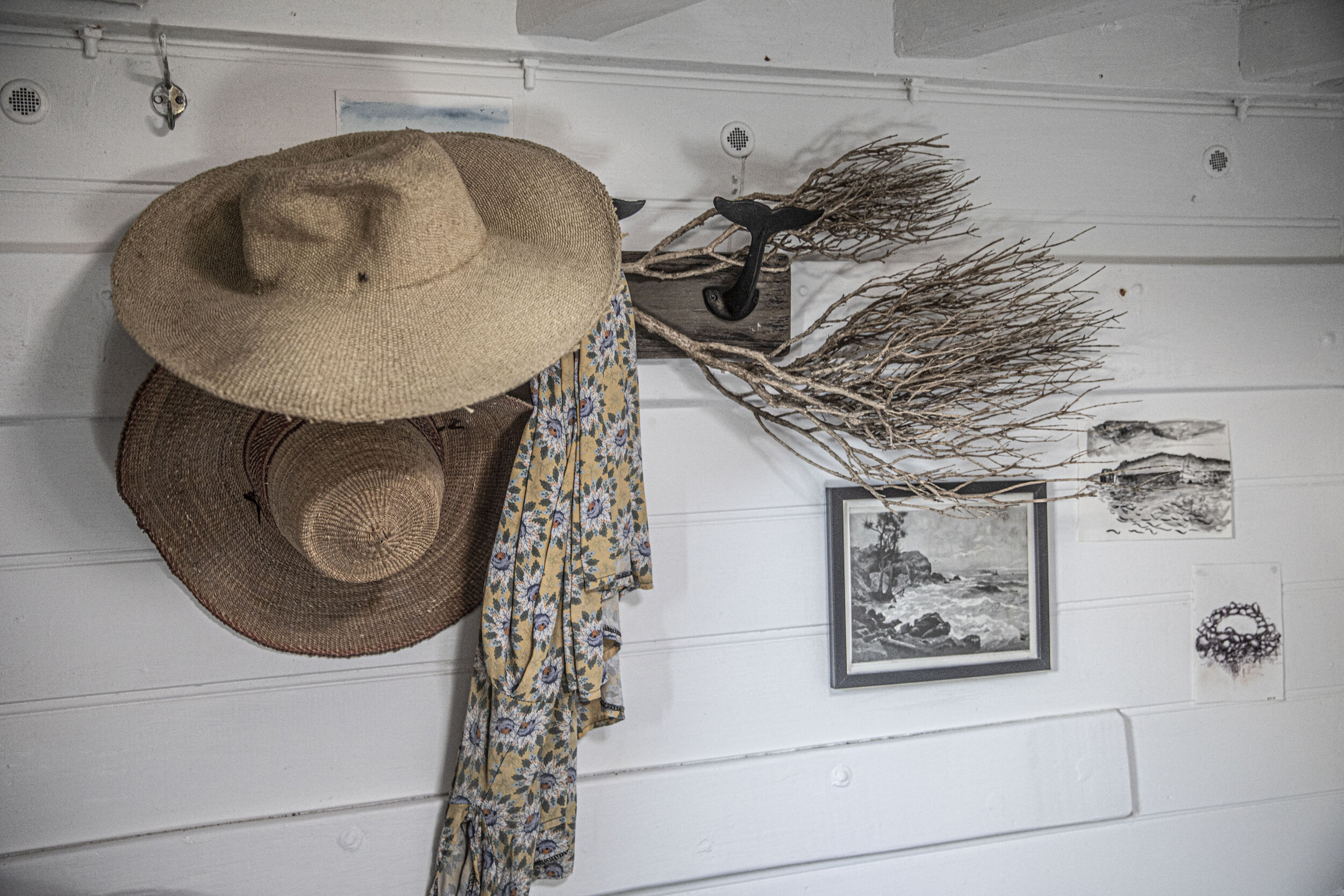
Firstly, Anna took me down below to check out the living quarters. Without major fuss or refit, Anna has transformed the space into something that resembles a much loved home. There’s a broad galley bench with running water, cupboards with bone handles, a good little fridge with spices attached to its door via magnetic jars. In the forepeak, basic fisherman’s bunks have been converted into a broad v-berth that doubles for both sleep and a reading nook. There’s a stripped canvas banquette while artwork, reflecting deep friendships, randomly hangs on his sides. Jars swing with candles. Anna has flowers on board and hooks for hats. The stairs have been tacked with Victorian carpet. This is a very, very cool space. But it’s not designed or deliberate, this is a boat of honest personality.
Back up on deck, the fish well intrigued me, I’d never seen one before. Anna opened a large trap door to reveal below, what looked to be a bilge filled with water. Purpose drilled, 2 inch holes turn the hull into a colander allowing a constant flow of sea below deck.
I watched a school of tiny fish dart in through the holes, dodge about and head back out the other side. Of course, it’s perfectly logical that pre-refrigeration, crays, once caught, we’re kept in this compartment.
Add to that the benefits of extra ballast in big seas and I could imagine the OJ sitting firmly in a swell, on his way back to Hobart ready to sell his haul on Constitution Dock.
The wheel house is a square little structure with a door and glass windows and a high bench seat. Steerage is with a true ship’s wheel under which sits a panel of dials and electrics. There’s an original clock and barometer and another trap door leading down to the engine room. With a clearance of about 4 feet, working on the engine is spent in a crouched position. It’s engine yoga, but I was keen to climb in and check out OJ’s 5LW Gardener Engine, from Manchester, big and green and bright with his original plate of manufacture still in place.
Recent, while working on the hull an old bloke approached and asked about the providence of the motor. ‘I’ve been fifty years a mariner,’ he said. ‘There’s not a thing I don’t know about Gardeners. If you’ve got a son, I could teach him.’
Anna sized the old salty up and replied ‘Stuff that! Teach me!’ And so now once a week Anna and Tom make a coffee and climb down below into the hold and get to work.
Anna purchased OJ from a friend in 2015. The first time she took him into fill up his tanks it cost $1000.
‘Of course I didn’t know about fuel additives. I had to read about diesel and diesel bug. But learning about old boats and engines is one of those osmotic things. Old boats are living breathing things, you need to work out the solar system, so if you don’t start the boat every week it can trickle charge. You need new batteries. And to address all the internals. But it finally got to the point where the tanks needed to be cleaned out. Tom’s got the only other cray boat on Pittwater, the LYNDENE He’s a salty old sea dog. With the same boat. Same but different. Same engine. He comes once a week and passes on his knowledge.’
Over three hours we discussed refits and fuel additives, engines, stripped decks versus painted decks, how wooden boats are thirsty creatures. We mulled over why more women don’t get themselves a boat, how to find people to help us and how we manage businesses that allow us to follow our dreams, but strangely across all topics we kept returning to one – the concept of freedom.
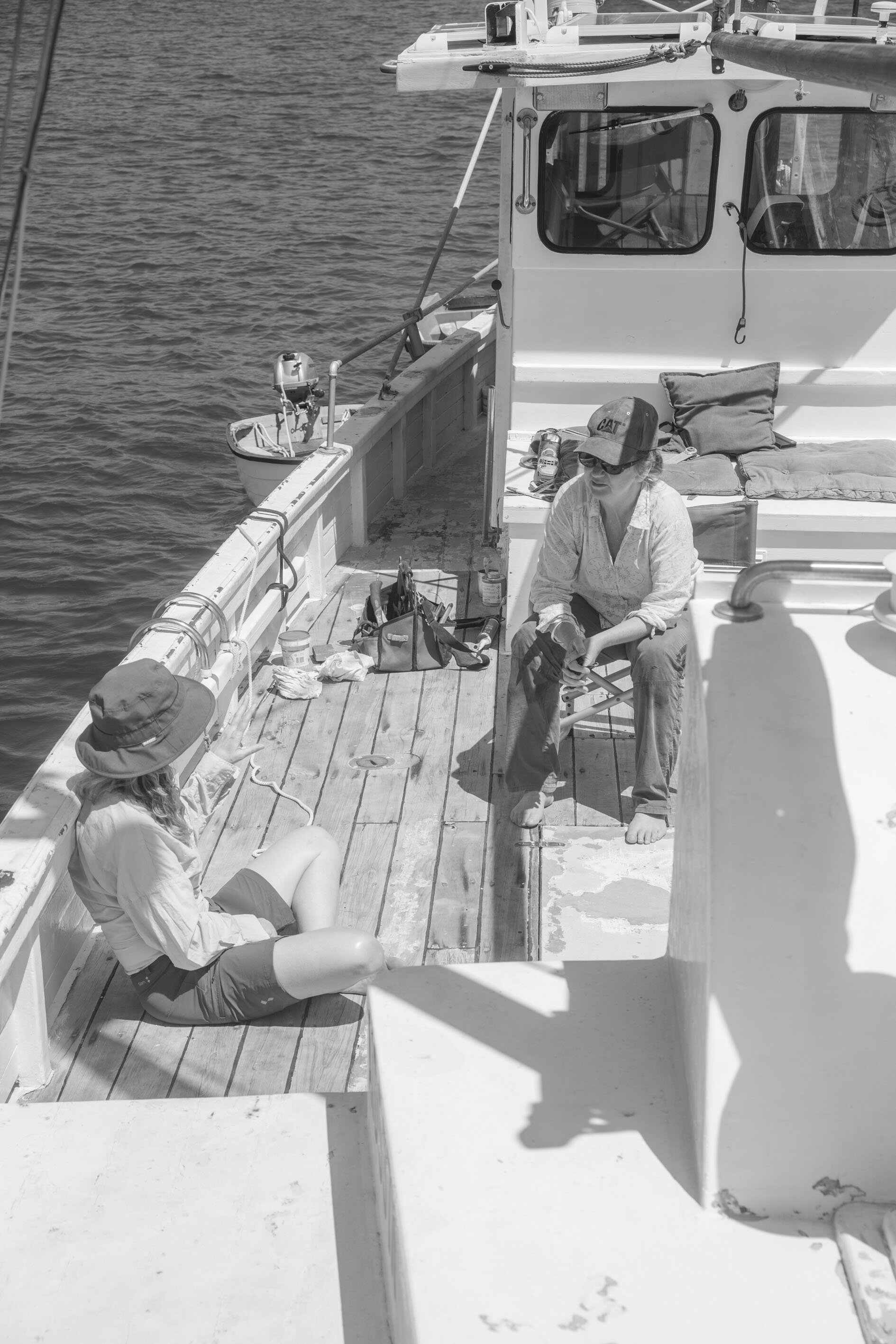
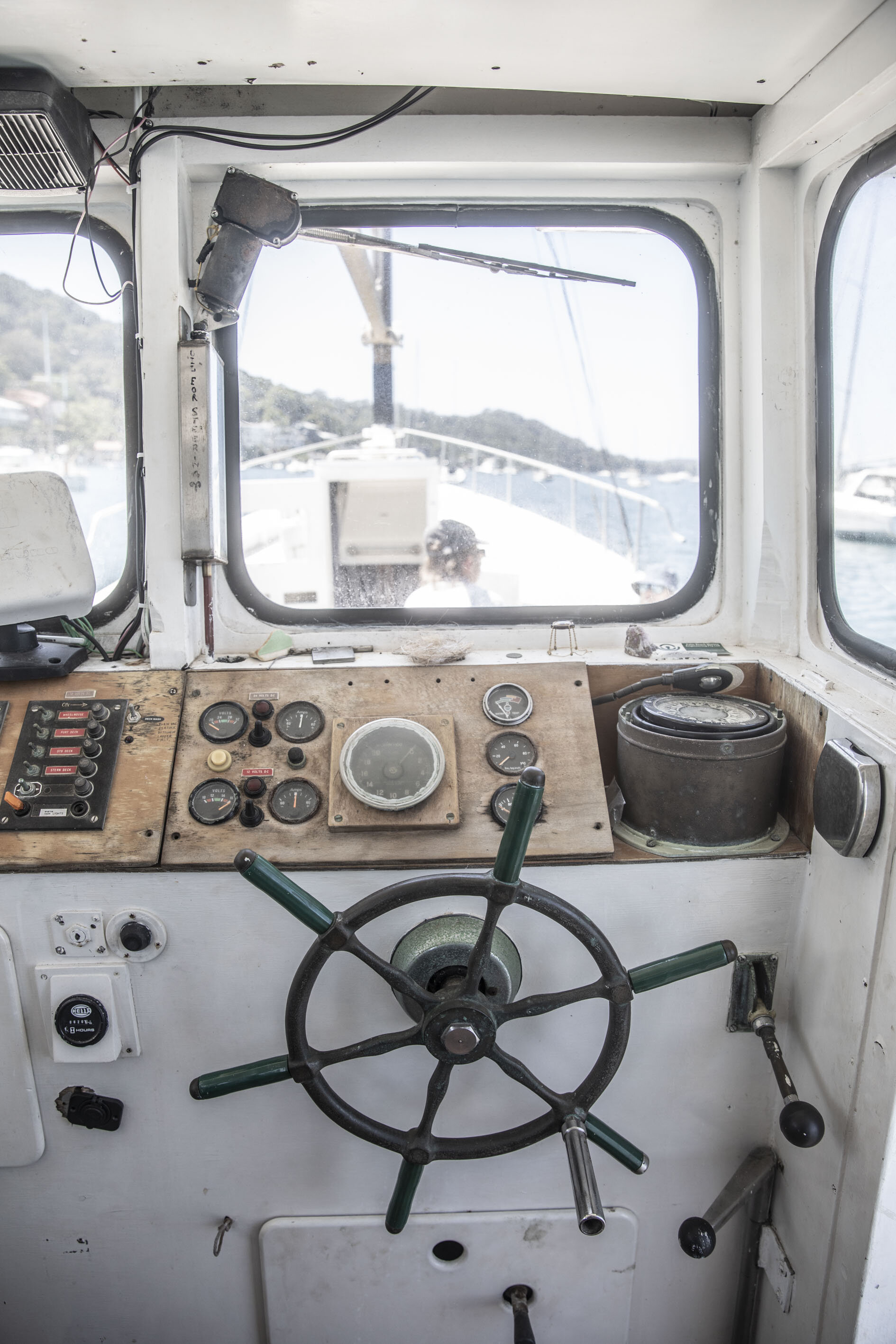
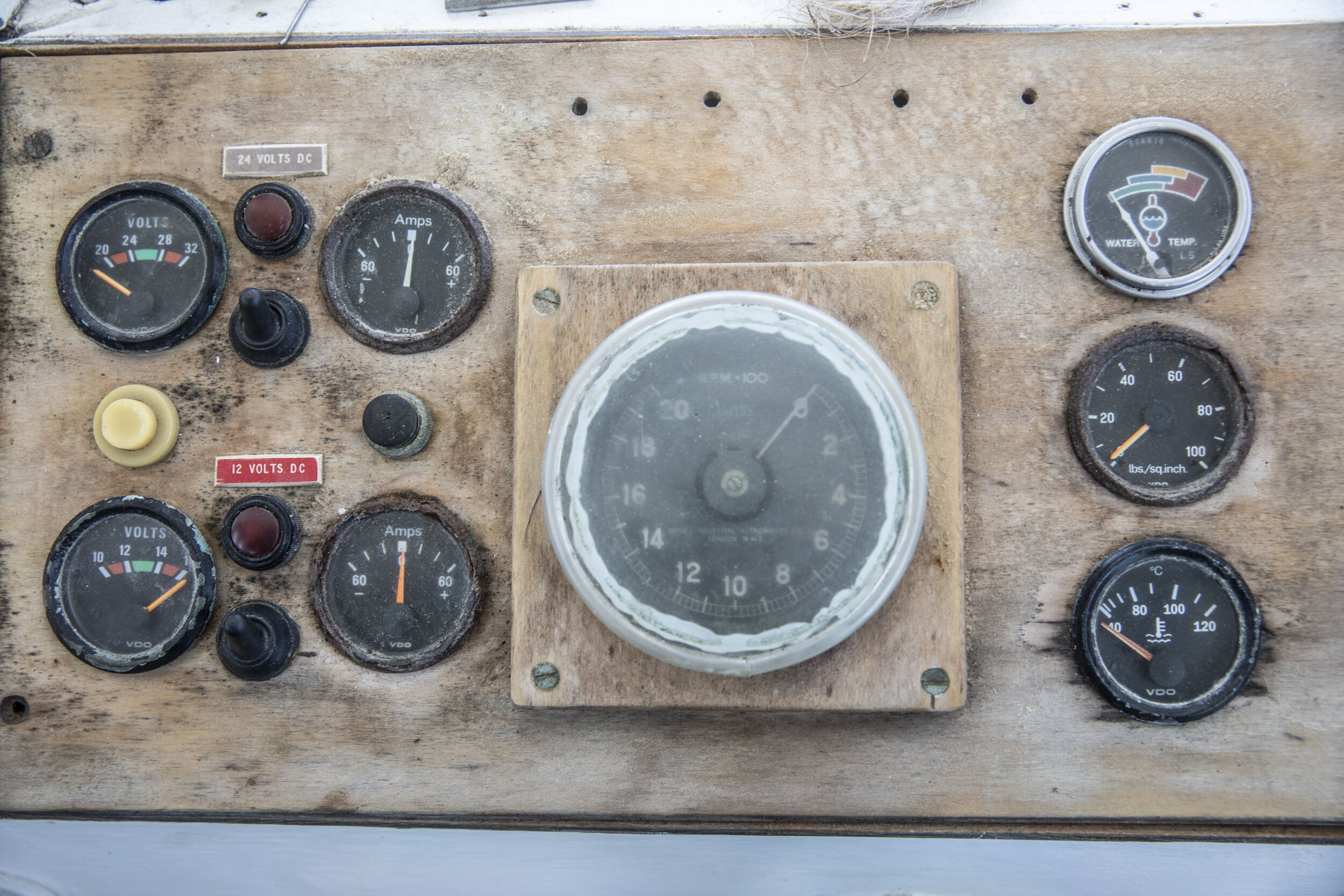
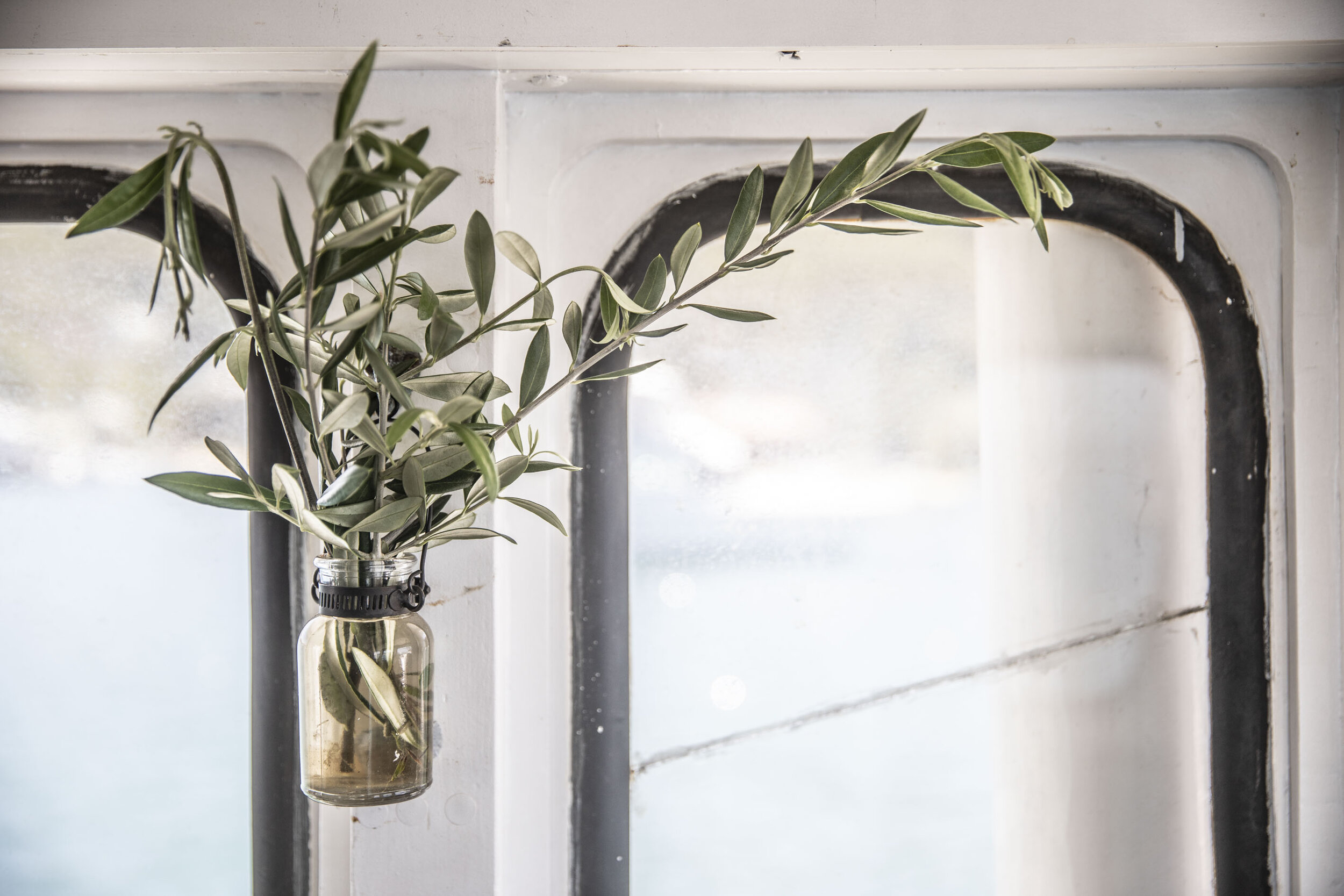
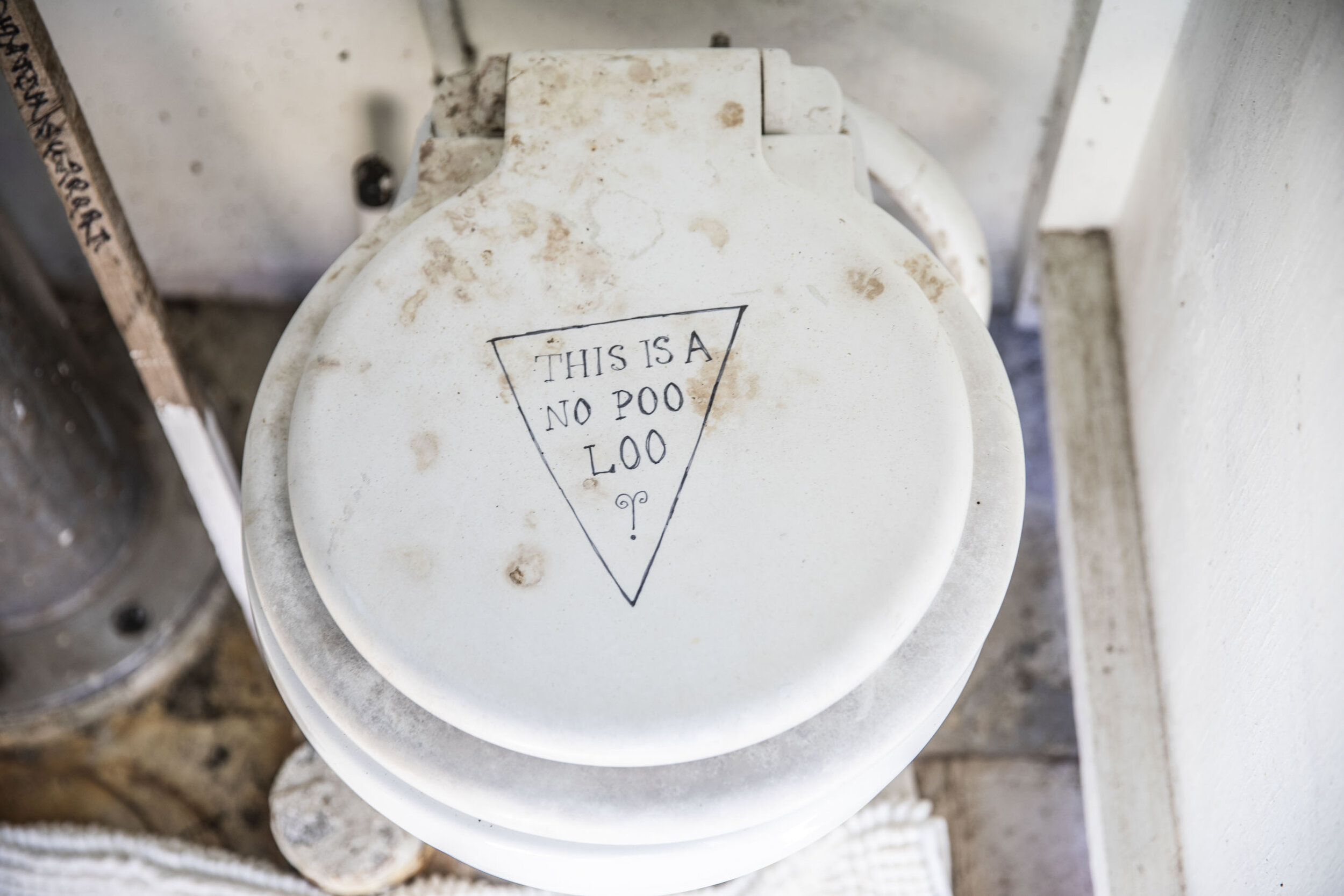
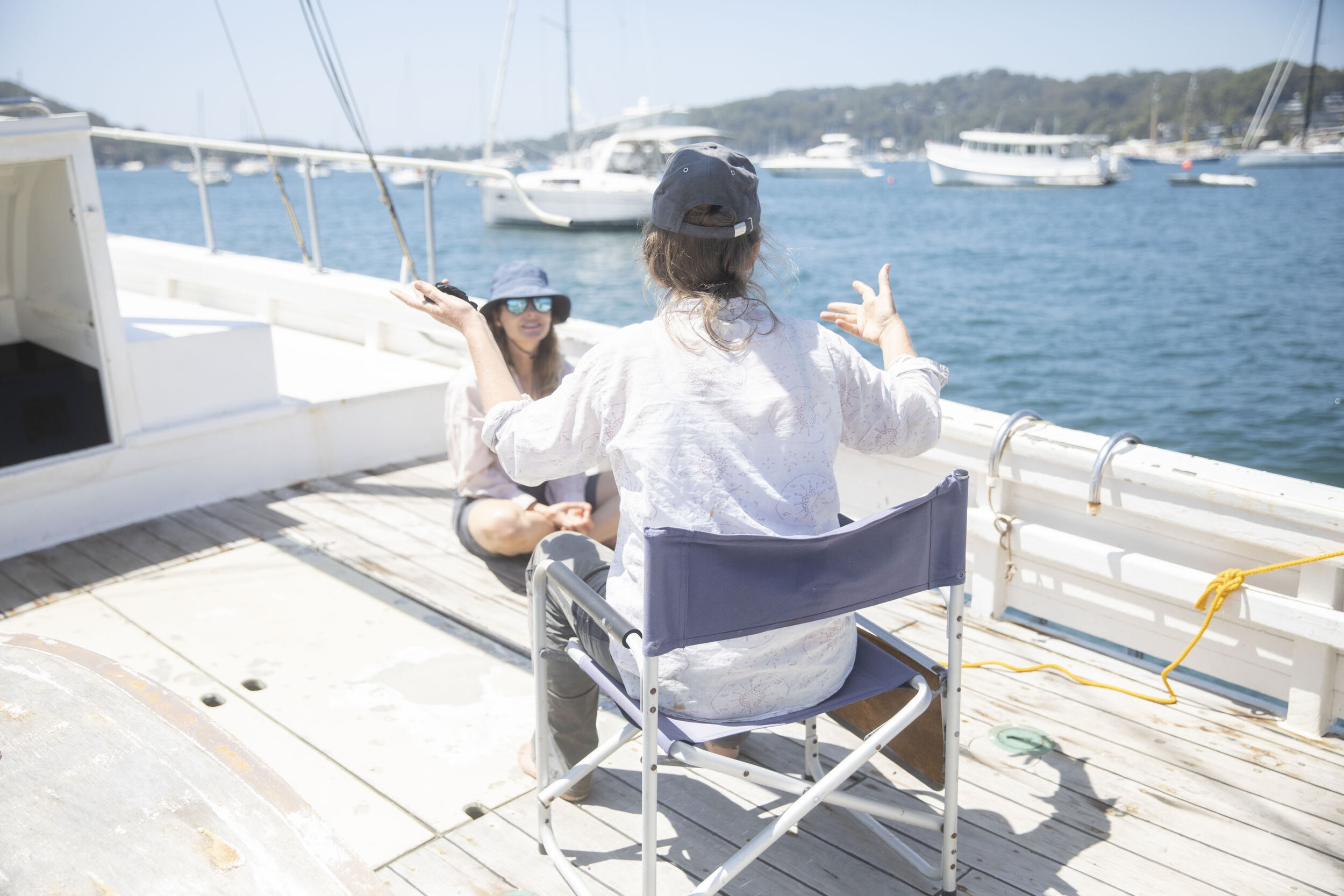
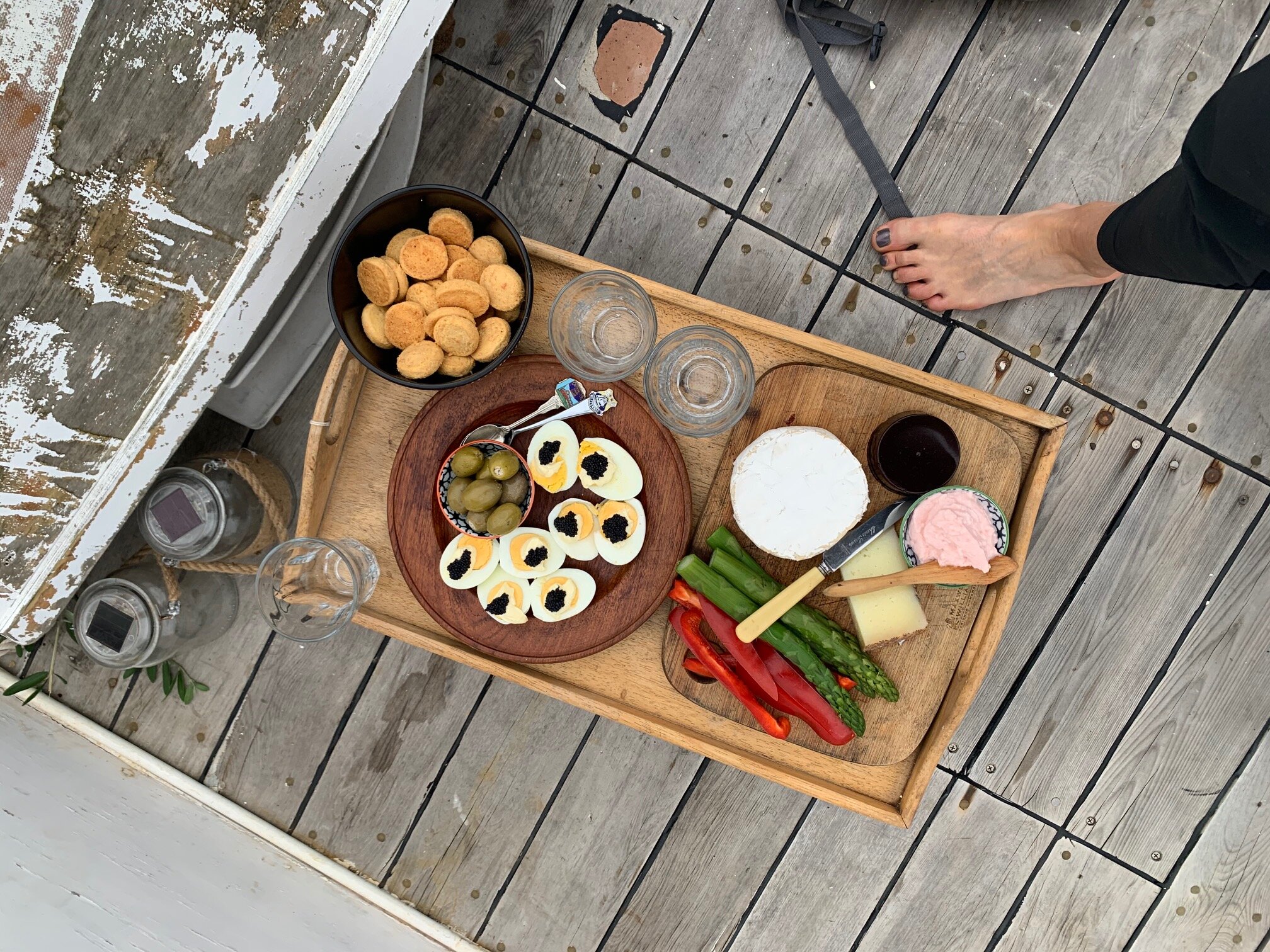
And now, Anna really does have the life. To which she replies, ‘I didn’t think about it. I just did it. Though, I do laugh at myself when I’m down in the engine room covered in grease fixing a 70 year old engine!’
‘Being on a woman on water, is still the exception, but hopefully that will change. It’s one of the most beautiful things you can do. 360 degree view of the sky. And clouds and birds, jelly fish, pelican that fly in I just love it.’
Have grown up on the Northern Beaches, Anna knows the place well and is happy to motor out, so she can watch whales breaching while eating her breakfast. But this wasn’t always the way. Living in the Blue Mountains, she realised she’d lost connection to the water and personally having endured a monstrous couple of years, she found herself complete drained of energy.
‘And so I think I had a need to get back to something. Diving into a wave makes everything ok. I live in a beautiful environment in the mountains but there’s something about salt water and about Pittwater. And there was something else missing. For me, it was land that has an Angophora growing on it. It’s a tree, a large eucalypt that doesn’t grow in mountains, they are however, in and around Pittwater. They are very fleshy, limb-like, they are very expressive with wrinkles, they always feel to me like I’ve come home. It’s a childhood thing of hanging around Pittwater.’
Finally, I asked Anna what would she say to other women who also want to get out on the water and spend more time on boats.
‘Don’t be afraid of it. It’s something you learn along the way. On occasion, I worry about the size of OJ. But I’ve watched people who’ve sailed around the world only to take a boat into a marina and burst all their fenders. All that experience and they make mistakes. I’ve learnt you do everything very slowly and with care. Look at the weather. Be smart.’
Next time, in January, when we’re back up on Pittwater, it’s my turn to cook for Anna. Once again, we’ll share a glass of wine, on a wooden boat, something delicious and most importantly we’ll share the wonder of what it is to be not just a woman on a boat, but what it means to be alive, free and passionate about being out on water.
And you too can follow Anna and OJ’s journey over on instagram @twocuppedhands
//
SIGN UP to never miss the news!
GOT AN IDEA for a story? Drop us a line.

